What is IP Rating and What Ingress Protection is Right for Your Project?
2023-05-31 | By Maker.io Staff
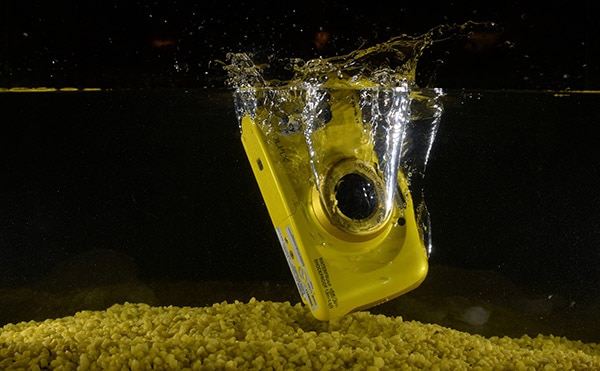
While some electronics projects are fine without a case, most finished projects won’t operate in the controlled safety of a dry, relatively dust-free workbench that shields the electronic components from the elements. Therefore, a protective enclosure is typically also part of a well-thought-out and practical project.
Ideally, the case considers and suits the environment the project will operate in to protect the project from the elements. In addition, some electronics projects, such as those using mains power, should also protect people using the electronics from accidents and risks - for example, getting a potentially fatal electric shock. With that in mind, this article will introduce the classes of ingress protection and help you choose an enclosure that suits your project’s needs.
What is Ingress Protection in Electronics?
Ingress Protection, or IP in short, describes a component’s ability to withstand environmental particles and pressure. Those particles include solids like dust and larger foreign objects and liquids, such as water droplets. The international standard IEC 60529 and the corresponding European standard EN 60529 describe the different classes of IP and when to use them in great detail. However, while these standards are vital for commercial applications, most makers will not benefit from knowing them in-depth. Instead, knowing what the numbers associated with a part’s IP rating mean usually suffices:
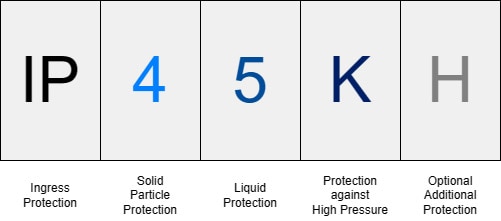
IP codes are given using two numbers with an IP prefix and an optional trailing K to indicate protection against high water pressure or high-temperature water, such as in dishwashers or car wash systems. In addition, a second optional letter may indicate protection against other hazardous environmental conditions or materials, like oil. Either way, the first number indicates a system’s ability to withstand solid particles, and the second digit describes a component’s protection against water.
Finally, note that some older systems or components may use an additional third number between the liquid-protection rating and the first optional letter to indicate mechanical impact protection. However, that system is officially no longer in use.
Solid Particle Protection Classes
The first digit of the IP-Code indicates an enclosure’s ability to withstand the intrusion of small particles: for example, dust, and the case’s protection against foreign objects like a person touching the electronics or debris. The number can be any of the following:
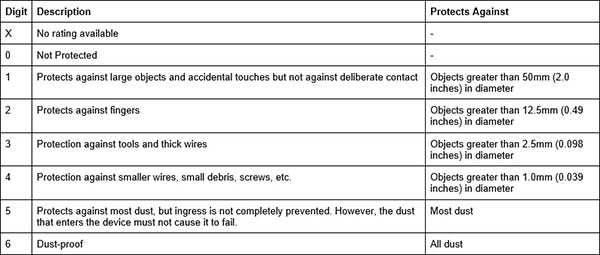
In summary, the larger the digit, the better an enclosure’s ability to protect its internals from the ingress of foreign solid particles.
Liquid Intrusion Protection
Similar to the first digit, the second digit describes a case’s ability to withstand the intrusion of liquids:
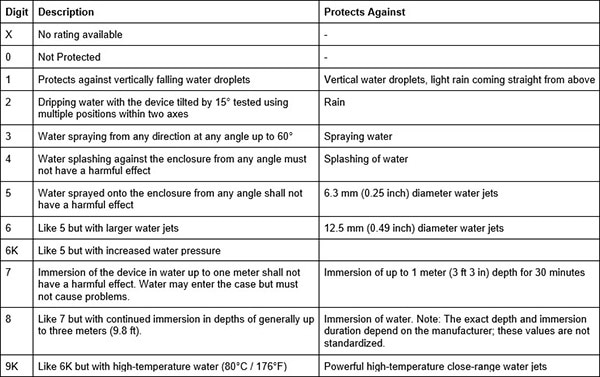
Similar to solid particle protection, the second digit describes various scenarios a device or enclosure must withstand. However, note that the testing facility lets the manufacturer decide some of the values for the tests, for example, the immersion duration. Therefore, you should remember that, out of two enclosures rated with a number 8 for liquid ingress protection, one may protect the electronics against water for three minutes while the other offers protection for ten minutes.
Additional Protection Ratings
Finally, the last optional letter supplies some additional details about the testing procedure or a case’s ability to withstand other hazardous materials. It may be one of the following:
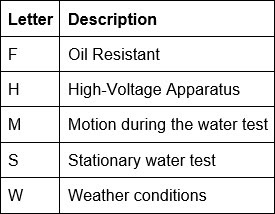
The Bottom Line for Protecting Your Device
While you may come across other rating systems from time to time, the international IP rating system discussed in this article is the most common one. In the hobbyist and DIY space, you will usually only come across two-digit codes without additional letters. However, knowing that the IP code may contain two additional letters that indicate other protective properties of an enclosure can prevent confusion when you come across them in a datasheet.
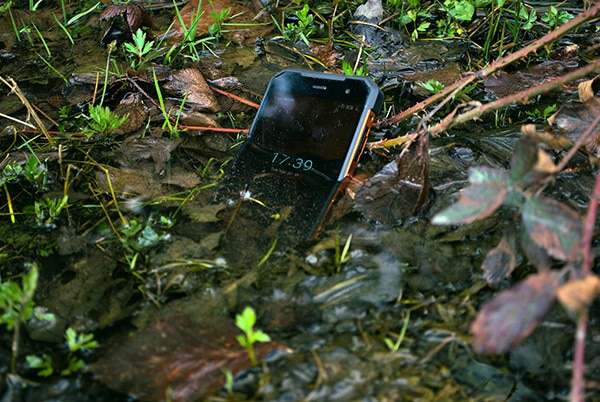 Many modern smartphones are protected against dust intrusion and submersion in water.
Many modern smartphones are protected against dust intrusion and submersion in water.
Either way, the first digit of the IP code describes an enclosures or system’s ability to withstand the intrusion of foreign solid particles. The greater the digit, the finer particles the system can withstand. Similarly, the second digit indicates an enclosure’s protection against various forms of water intrusion. You will typically not need to go beyond IP67 in most cases, as enclosures that offer greater protection are generally intended for use in industrial and medical applications that require rigorous cleaning using harsh chemicals, high pressure, or high temperatures.
Recommended Reading
Customize Your Aluminum Enclosure End Caps Using 3D Printing
Have questions or comments? Continue the conversation on TechForum, DigiKey's online community and technical resource.









